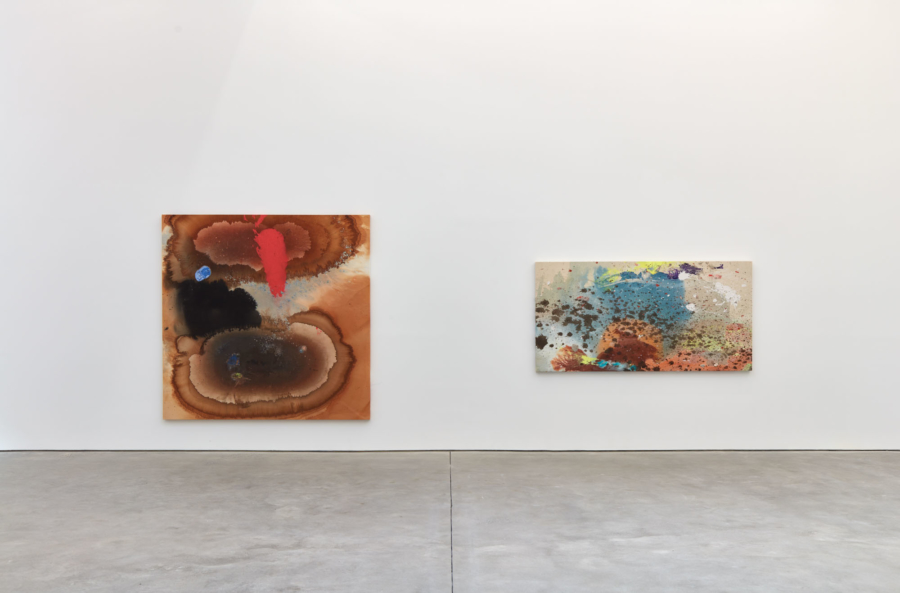November 2, 2021
Download as PDF
View on The Brooklyn Rail

Installation view: Peter Bradley, Karma, New York, 2021. Courtesy Karma, New York.
The nine recent paintings presented in this exhibition differ in significant ways from Peter Bradley’s earlier work, examples of which could be seen here in New York just last month in Karma’s recreation of the groundbreaking De Luxe theatre exhibition of 1971, an exhibition Bradley curated at the invitation of the de Menils in Houston, Texas, and one of the first racially integrated exhibitions of contemporary art in the United States. Included, whether high profile or not, were those who Bradley considered the best artists working with abstraction in the country. Bradley’s recent paintings evince the same spontaneity and intelligence that has been seen in his work since the 1970s, together with the subsequent advantage of a life’s dedication to painting. In Bradley’s case, this has resulted in a very distinctive particularity deriving from trusting both intuition and the power of material and color. This freedom has produced thrilling images.
The surface of the paintings here posses an aqueous, optical charge: pigment is absorbed into canvas, already made wet with water and laid flat on the studio floor or moved outdoors onto uneven terrain. Liquid paint is poured in varying viscosities that separate or combine as they dry at different rates. Colors expand radiantly over and into other colors, often unexpectedly—becoming boundaries of tonal contrast or fine gradations of color. Added along the way are clots and skeins of dried paint, mica and sand. The textural jolts from these additions, together with spatters of thrown and dripped paint, are either stark or merge with color already applied, and attain in their contrasts a vital and vivid spatial presence. Take, for example, Scrapple From The Apple (2021) a painting titled to reference a Charlie Parker composition. Concentric rings of browns—recalling sections cut through marble, sounds repeating in succession or an unfolding flower—are stained into the surface and find harmonic, rhythmic discord against areas of red, black, and blue colors of variable density. Coravilas (2021) is a painting of smoother transitions—from mauve, yellow and green, a shower of cobalt, and a strident red dash flowing toward and past each other in gentle seams or occasional crisp punctuation. The effect is of looking into transparencies, recalling stained resin or colored glass. Coravilas is appropriately the name of a Bill Evans composition. The two paintings evoke the music of two masters of Jazz, those of BeBop and Modal jazz respectively. And, shared with musicians is this artist’s Orphic transmutation of experience, of life, into something else, in their case music and his painting.
Bradley follows the desire of the color, as Matisse described following the desire of the line until it disappeared, note, not his own desire, but the line’s desire. Bradley’s paintings do not constitute a world of causality and mechanism, of rational conclusion, figured out and executed. Nor are they irrational in what would amount to a nod to surrealist automatism, disassociated and dream-like. The gesture is here, rather, moving to the exterior—not inward, toward superficial self-expressionism. This is also true of some other artists working today with fields of improvised and assertively visual painting: Sandi Slone, John Armleder and Sam Gilliam, to name three, all very diverse in their approach to painting in other ways, and all making great work. When Bradley came to the attention of Kenneth Noland, Clement Greenberg and André Emmerich in the 1970s, it was for his talent and determination. They celebrated the formal and visual in painting at the exclusion of all other qualities. But, in always concentrating on the formal problems—the fugitive and concrete effects of color and material—Bradley didn’t deny content, he let it be.



